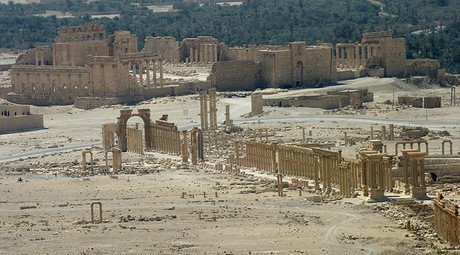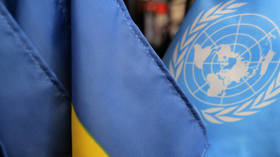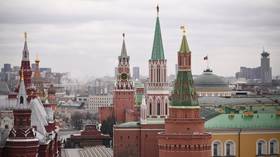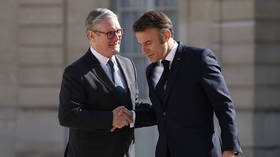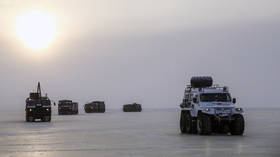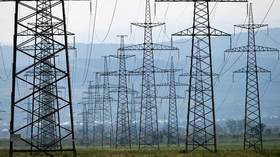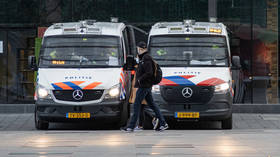‘Pearl of the desert’: RT visits liberated ancient ruins of Palmyra (DRONE FOOTAGE)
Days after the Syrian Army recaptured Palmyra from Islamic State militants, RT’s Lizzie Phelan visited the ancient archeological treasure to see if the UNESCO World Heritage Site suffered any irreparable damage after being in the jihadists' hands.
Just getting to Palmyra is a challenge. Islamic State (IS, formerly ISIS/ISIL) mined the entrances to the world-famous site, which have been painstakingly cleared by the Syrian Army, with Russian assistance.
RT’s Lizzie Phelan was one of the first journalists to set foot in Palmyra since the site was captured by IS militants in May 2015.
“It’s quite incredible to be standing here in the pearl of the desert – the ancient city of Palmyra that for months people around the world feared would be reduced to dust by ISIS,” she said.
Phelan confirmed that large parts of the centuries-old artifacts have been damaged, such as the Temple of Bel and the Arch of Triumph, but some of the historic relics are still standing.
READ MORE: ISIS partially destroys 2,000-yo Bel temple in Palmyra, Syria - monitor
Phelan visited what is left of the 2,000-year-old Temple of Bel, which is considered one of the world’s greatest ancient relics.
The temple was constructed in honor of the Semitic god Bel, and was part of a series of three temples, with the others dedicated to the lunar god Algibol and the sun god Yarhibol. They were built in the year 32 AD and were at the center of Palmyra’s religious life.
However, parts were destroyed when IS overran the site. With the terrorist group now banished, experts will see if the historic site can be salvaged. Phelan says the task is to see how many large stones that made up the temple remain intact and from there, they will be able to calculate whether it will be possible to reconstruct the archeological treasure.
“There are craters in the ground all around this ancient site,” Phelan mentioned as she took a walk around Palmyra. “These were caused by landmines laid by ISIS and the soldiers said that most of the fighters they lost were due to these mines, which were often laid between stones to make them blend in,” she added.
However, thanks to the Syrian Army, which was helped by Russian air support, Palmyra is once again in safe hands and out of the clutches of the IS terrorists, who suffered one of their biggest defeats since capturing large swathes of Syria and Iraq in June 2014.
“We sacrificed so many martyrs in this battle due to the mines and booby traps,” said Captain Ali Ali, from the Desert Hawks Brigade, who spoke to RT. “ISIL fled, but they booby-trapped the whole area. I hope that all those people who sacrificed their lives to save Palmyra – I hope that their souls will rest in peace and that we will continue freeing all of Syria,” he added.
Amr Al-Azm, an associate professor of Middle East history at Shawnee State University in Ohio, says that Islamic State’s main goal was not to destroy artifacts at Palmyra, but to sell them to the highest bidder.
“ISIS sees cultural heritage as an exportable resource and they will loot what they can sell – so if this resource can be sold, they will sell it. They have a special department of antiquities and it is placed within the Department of Resources, which is the same department used for the sale of oil and mineral wealth,” Al-Azm told RT.
However, Al-Azm added that some larger objects, such as the Temple of Bel and the Arch of Triumph, were blown up mainly for propaganda purposes, rather than due to any particular religious beliefs.
“They do also carry out these large destructions, but they usually destroy what they cannot sell. So if something cannot be sold, they will use it for something else, like for propaganda purposes, and that is where they made these big explosions. This is normally for a carefully orchestrated form of propaganda and they send a very powerful message,” he mentioned.
The aim will now be to try and restore parts of Palmyra, which was known as the “Oasis of the Syrian Desert.” However, the director of the Hermitage Museum in St. Petersburg, Mikhail Piotrovsky, says there is hope that parts of the World Heritage Site can be saved.
“The damage done to Palmyra architectural monuments is enormous, but it has not been razed to the ground completely. The main symbol of the city, the famous columns, they are standing, and we now have to inspect the site accurately to determine what else is left there,” Piotrovsky told RT.
Meanwhile, the deputy director of Russia’s State Museum of Oriental Art, Tigran Mkrtychev, told RT that the international community must do its bit to help restore Palmyra because it is an important artifact for all humankind, not only the Syrian people.
“If we approach this issue strategically and make this monument a certain consolidation of the forces of the East and the West in restoration of the monument of a global importance, it [Palmyra] can become a ‘brand’ which will unite Eastern and Western civilizations for years to come,” he stressed.
